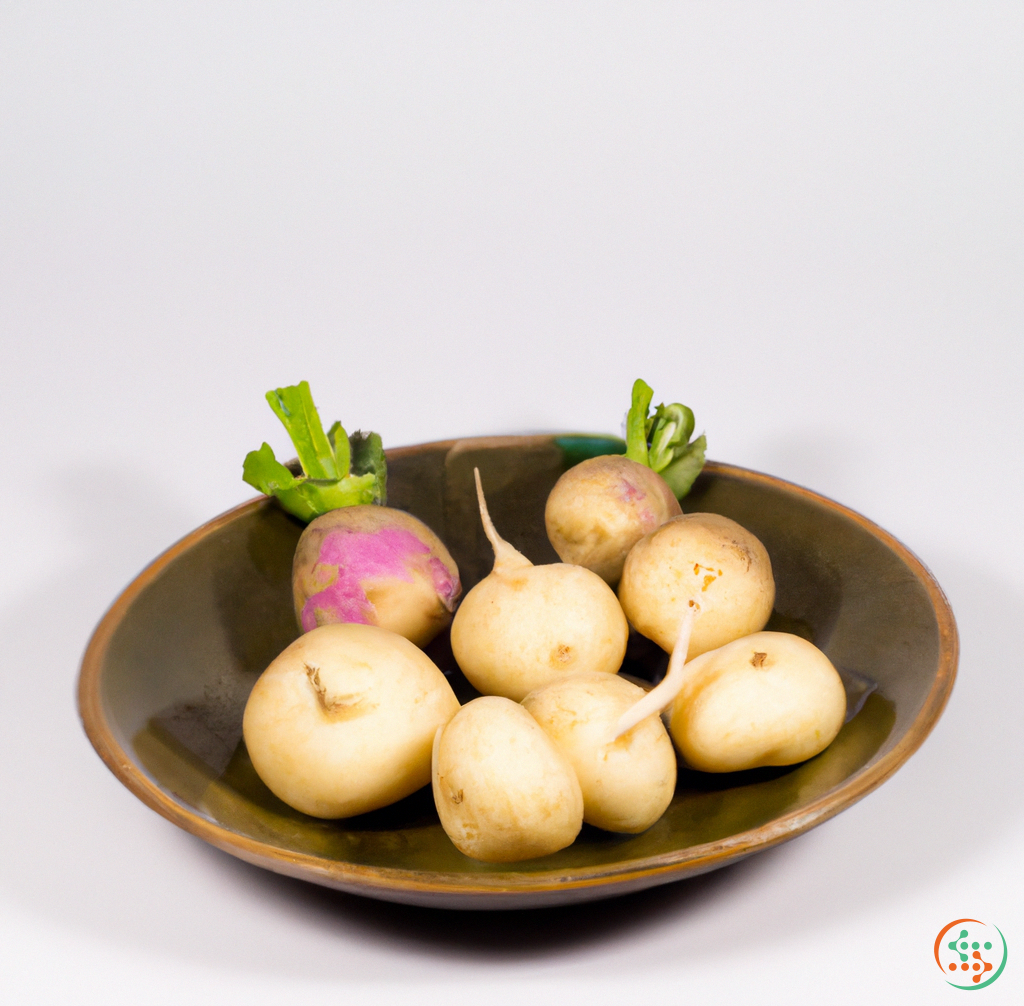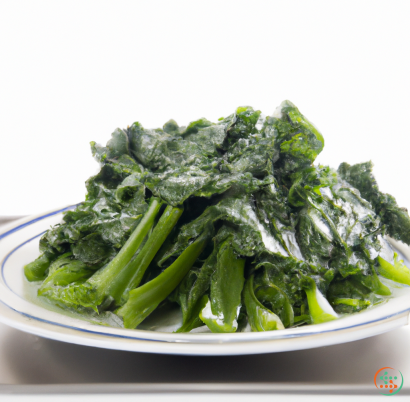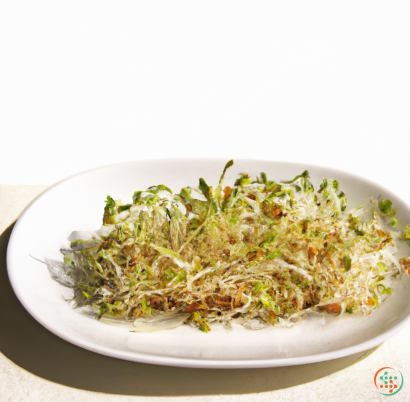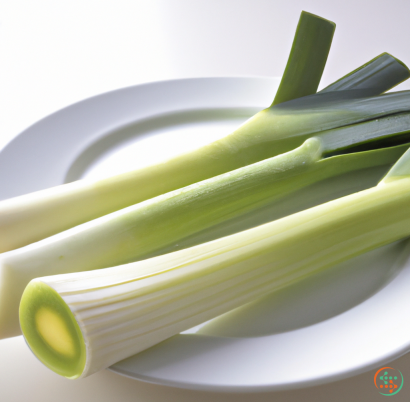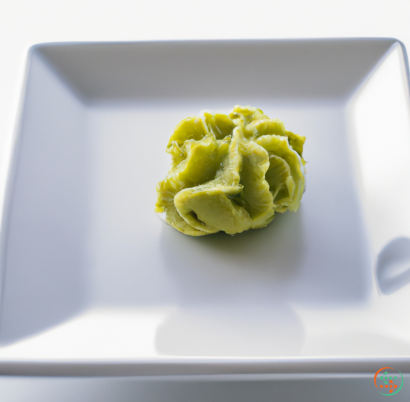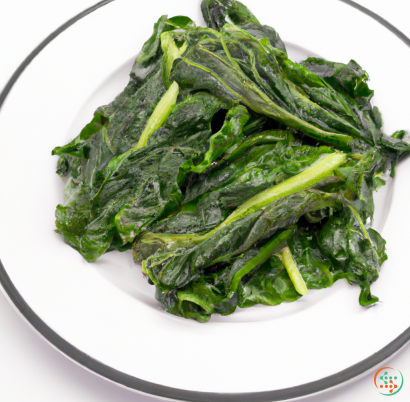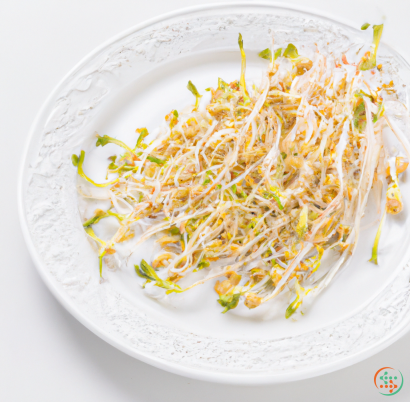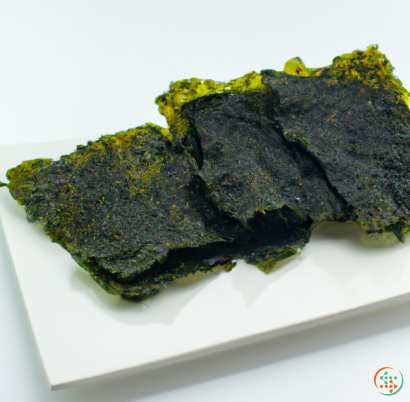Turnips
There is no doubt that turnips have experienced a resurgence in popularity in recent years, becoming a staple in both modern and traditional cuisine. Familiar to many cultures, they can trace their roots back to ancient times. But exactly what are turnips? Read on to learn more about these versatile and tasty roots.
A turnip is a root vegetable that is usually white with purple-tinged shoulders, although yellow and red varieties also exist. It has an edible root, and the leaves are sometimes eaten as well. The texture is firm and starchy with a sweet, earthy flavor. It is closely related to the rutabaga, and is a member of the cruciferous family of vegetables, which also includes cabbage, Brussels sprouts, and kale.
Turnips are a very versatile vegetable and can be eaten in a variety of ways, either cooked or raw. When roasted, they develop a subtle sweetness and can be served as a side dish or mashed and combined with potatoes to form a tasty mash. They can also be boiled and used as an ingredient in soups and stews. Raw, they can be added to salads and sandwiches, or finely chopped and used in slaws.
The nutrient-rich turnip contains a range of vitamins and minerals, as well as dietary fiber, making it an excellent choice for a healthy diet. It is particularly high in Vitamin C, Vitamin B6, magnesium, potassium, and manganese. In addition, it contains an impressive amount of antioxidants, which have anti-inflammatory and anti-cancer benefits.
Turnips have a number of health benefits. As well as being a good source of vitamins and minerals, they are said to help reduce cholesterol levels and can aid digestion. They are also thought to be good for boosting the immune system and regulating blood pressure.
Turnips are relatively easy to grow. The seeds should be planted in the spring, after the last frost. They require full sun and need to be kept moist. They should be harvested before the first frost in the fall and can be stored in a cool and dark place or frozen for up to a year.
Turnips are a staple ingredient of many cuisines around the world, from classic North American dishes such as colcannon, turnip cakes, and mashed turnips, to more traditional European recipes such as grilled turnips, turnip gratin, and stewed turnips. Roasted turnips are also a popular snack in Asia and are often served with salted spices like wasabi.
So whether you’re looking for a nutritious addition to your meals, or simply a delicious and versatile cooking ingredient, turnips have you covered. Their mild flavor, versatility, and health benefits make them a great choice for including in your diet. Give them a try and you could soon be enjoying turnip-filled meals of your own.
From Seed to Plate: An Exploration of How a Turnip Gets to Your Dinner Plate
Turnips are one of the most commonly consumed root vegetables in the world. They have been utilized for centuries in various cultures, and can be found in a variety of dishes. But how do they get from seed to plate? In this article, we will take a look at the process of turnip production and distribution.
The first step in the life of a turnip is seeding. Growers may choose to obtain seeds from a local supplier, or they may decide to obtain them from reputable suppliers such as Park Seed or Johnny’s Selected Seeds. Once the seeds are obtained, the grower needs to select a suitable location to plant them. The planting site must have good drainage and fertile soil, along with plenty of sun for optimal growth. It is important that the soil has a pH level between 6.0 - 7.0 to ensure optimal production.
Once the seeds have been planted, the turnips need to be watered regularly to ensure optimal growth. In general, turnips require 1-2 inches of water per week during the growing season, either through rainfall or manual irrigation. The temperature of the soil should also be monitored to ensure that it does not become too hot. During the early stages of growth, a temperature of 65-75°F is preferred.
As the turnips begin to grow, the leaves and stems are monitored for pests and diseases, and the necessary preventative measures taken. In addition, the turnips may be thinned if necessary to guarantee optimal growth. As the turnips get closer to harvest, nitrogen-rich fertilizers may be added if necessary.
When the turnips are mature, they are ready to be harvested. Most growers will use special harvesting machinery to make the process as efficient as possible. The turnips are then inspected and sorted into various crates based on size and shape. During this stage, any unwanted turnips are removed and discarded.
After the turnips are sorted and packed, they are ready to be shipped to their destination. Depending on their intended destination, the turnips may be sent via ground transportation, air freight, or water transport. After arriving at their destination, the turnips will typically be inspected once more to ensure quality, before being transported to their final destination - the grocery store.
At the grocery store, the turnips are carefully inspected once more for blemishes and other defects. If the turnip passes this inspection, it is placed on the store shelves. When a customer purchases the turnips, they are taken home and prepared for consumption. This typically includes peeling and chopping, unless the turnips are to be cooked whole.
Once the turnips have been prepared, they are ready to be cooked and served. Commonly, turnips are added to soups, stews, and roasts to add flavor and texture. Some dishes also use pickled turnips, which are typically made by curing the turnip in salt water, vinegar, and other spices.
The turnips can also be roasted and served as a side dish. To do this, the turnip is peeled, and cut into cubes or wedges. The turnip is then tossed with oil, salt, and pepper and roasted in the oven, until it turns golden brown.
As you can see, there is quite a bit of work involved in getting turnips from seed to plate. From planting to harvesting, shipping, and finally cooking and serving, turnips are a delicious and nutritious vegetable, and a staple in many homes. And with the steps outlined above, you can now go ahead and enjoy turnips in all their glory.
| Vitamin E | 0.03 mg | |
| Vitamin K | 0.1 ug | |
| Vitamin C | 0.021 grams | |
| Vitamin B1 | 0.04 mg | |
| Vitamin B2 | 0.03 mg | |
| Vitamin B3 | 0.4 mg | |
| Vitamin B4 | 0.0111 grams | |
| Vitamin B5 | 0.2 mg | |
| Vitamin B6 | 0.09 mg | |
| Vitamin B9 | 0.015 mg |
| Calcium | 0.03 grams |
Daily Value 1.3 g
|
| Iron | 0.3 mg |
Daily Value 0.018 g
|
| Magnesium | 0.011 grams |
Daily Value 0.4 g
|
| Phosphorus | 0.027 grams |
Daily Value 1.25 g
|
| Potassium | 0.191 grams |
Daily Value 4.7 g
|
| Sodium | 0.067 grams |
Daily Value 2.3 g
|
| Zinc | 0.27 mg |
Daily Value 0.011 g
|
| Copper | 0.09 mg |
Daily Value 0.9 mg
|
| Manganese | 0.13 mg |
Daily Value 0.0023 g
|
| Selenium | 0.7 ug |
Daily Value 0.055 mg
|
| Tryptophan | 0.009 grams | |
| Threonine | 0.025 grams | |
| Isoleucine | 0.036 grams | |
| Leucine | 0.033 grams | |
| Lysine | 0.036 grams | |
| Methionine | 0.011 grams | |
| Cystine | 0.005 grams | |
| Phenylalanine | 0.017 grams | |
| Tyrosine | 0.013 grams | |
| Valine | 0.03 grams | |
| Arginine | 0.024 grams | |
| Histidine | 0.014 grams | |
| Alanine | 0.035 grams | |
| Aspartic Acid | 0.063 grams | |
| Glutamic Acid | 0.13 grams | |
| Glycine | 0.025 grams | |
| Proline | 0.026 grams | |
| Serine | 0.029 grams |
| Total Sugars | 3.8 grams |
per 100g
|
| Palmitic acid (16:0) | 0.01 grams |
|
| Total Saturated fatty acids: | 0.01 g | |
| Oleic acid (18:1) | 0.01 grams |
|
| Total Monounsaturated fatty acids: | 0.01 g | |
| Linolenic acid (18:3) | 0.04 grams |
|
| Linoleic acid (18:2) | 0.01 grams |
|
| Total Polyunsaturated fatty acids: | 0.05 g | |
| Phytosterols | 0.01 grams |
|
| Total Sterols: | 0.01 g | |
